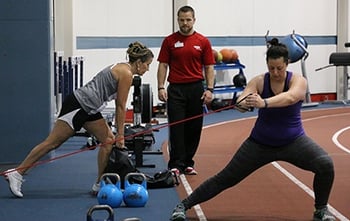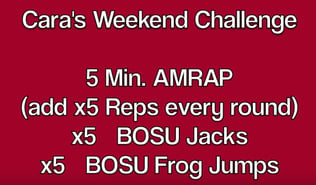Not long ago, we posted a blog entitled “Where Do ‘They’ Come Up with These Exercise Names?” in which I discussed some of the more bizarrely named exercises and provided a little background for each. Here I’d like to extend that process and discuss Personal Trainer Lingo 101 (aka “Where Do ‘They’ Come Up with These Exercise Names? Part 2). We have all heard fitness center lingo for workouts such as Pyramid Sets, AMRAPS, Supersets, and so on, but what do they mean? Some of them make sense; others, not so much. Enjoy!
Pyramid Set
A pyramid set has absolutely nothing to do with building a stone structure in Egypt, but the method’s format does look similar to that of a pyramid when diagramed out. The pyramid set is a routine that is made of several rounds in which the reps decrease and weight increases each round until you reach the fewest reps you are attempting. Typically you would perform 10, 9, 8, 7, etc. until you reach one repetition. This is common practice for someone who wants a good workout without too much thinking.
When you have completed your pyramid set, you can complete the workout by doing a “reverse pyramid set” by increasing reps per set and decreasing weight until you reach the original starting point.
AMRAP
AMRAP is an acronym for “As Many Reps/Rounds as Possible.” This is meant to be a one-set-only bout in which maximal effort is given until exhaustion. Once your AMRAP is over (whether you are using time or effort as your end point), you will need to rest before attempting the same lift again. Many people like to do an AMRAP at the end of a workout to squeeze the last drops of energy out of their workout.
 As a funny side note, I like to think that if I were to give all my “might” on any particular exercise, I would therefore no longer have any “might” left and would need to take a nap to recover. The point is, even if you give all your effort, your body and mind probably won’t let you get that far before they shut down and you need to recover. As a challenge, Cara Hartman from NIFS shows a perfect example of this in her NIFS video blog series called Cara’s Weekend Challenge.
As a funny side note, I like to think that if I were to give all my “might” on any particular exercise, I would therefore no longer have any “might” left and would need to take a nap to recover. The point is, even if you give all your effort, your body and mind probably won’t let you get that far before they shut down and you need to recover. As a challenge, Cara Hartman from NIFS shows a perfect example of this in her NIFS video blog series called Cara’s Weekend Challenge.
Supersets
A superset sounds pretty fantastic! It is quite a handy technique that involves two complementary exercises working back to back in order to decrease rest time, promote calorie burning, and help keep your workout flowing smoothly. NIFS Intern Morgan Richardson adds, “For an awesome leg workout, I like to perform deadlifts followed by a round of plyometric box jumps.” Another example would be following your triceps extensions with biceps curls (or vice versa). You could say that would be “two tickets to the gun show,” but we will have to save that for the next installment of Personal Trainer Lingo 101.
***
There are so many terms, phrases, and gym lingo that we hear every day. Some are pretty obvious; others make us wonder what the trainers were thinking when they came up with the names and concepts. One thing we do know for sure is that it is a lot of fun to talk about them and sometimes poke a little fun. Fitness is a serious matter, but that doesn’t mean we can’t have fun doing it!
If you have any Personal Training Lingo 101 questions, please post them in the comments section below. We would love to discuss them (maybe you can even stump the trainer!).
Until next time, Rejoice and Evolve,

This blog was written by Thomas Livengood, Health Fitness Instructor at NIFS. To find out more about the NIFS bloggers click here.
